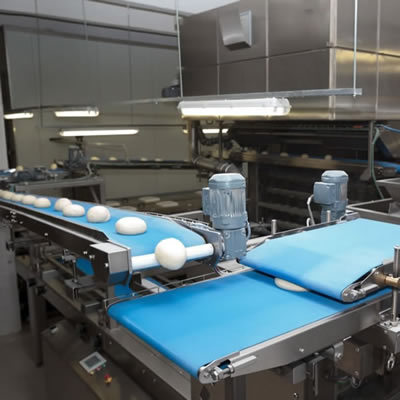
Intermediate Proofing
What is Intermediate Proofing?
Intermediate proofing is a short rest period between dough-dividing and the final sheeting/ moulding.1 The length is dependent upon the ability of the dough to relax after dividing. This step ensures that the dough will not be tight and rubbery, and will easily go through the molder sheeting rollers without tearing.1
- The tighter the dough, the more time is needed for intermediate proofing.
- Alternatively, this time can be shortened by dough relaxers like deactivated yeasts.
Origin
Bakeries evolved from very basic equipment to fully automated systems. The advancement in technology allows bread to be produced in a more efficient way. After World War II, commercially produced bread increased to meet market demand.2 Fermentation and proof time decreased with the addition of mechanical dough development and intensive mixing.2 Optimal dough could be obtained within 4-12 minutes further reducing the entire bread making process to 1-1 ½ hours.2
The shortened fermentation had a negative impact on flavor development. In order to meet today’s demand for tastier bread, brew systems, sponges, and allowing longer fermentation times are being added into the automation process of commercial bakeries. Intermediate proofing was implemented due to the demands of all these automation.
How intermediate proofing works
Dividing and rounding bulk-fermented dough results in a loss of gases and deterioration of pliability and elasticity.3 The dough undergoes an intermediate proof, during which fermentation and the structural relaxation of gluten takes place, making the dough suitable for final molding.3
The intermediate proof time can be used to influence the final bread cell structure and can take up to 15 minutes, depending on the temperature and toughness of the dough. The intermediate proofing allows the yeast to generate carbon dioxide gas, and therefore, a longer intermediate proof time is critical to make a product like French baguette that has an open cell structure.
The changes in dough properties during this period are influenced not only by time and temperature but also by other factors such as reducing agents or proteolytic enzymes that have been used to improve dough extensibility.3 In many plants, the intermediate proofing time is deliberately shortened by the use of these ingredients.
Application
The pocket-type proofer is the most commonly used intermediate proofer in commercial baking. Dough balls are transferred onto pockets for the entirety of the resting period. The pockets are then held in frames which are in turn fixed between two chains that carry the swings around the proofing cabinet from charging to discharging stations. A turnover device is incorporated to let the dough piece roll from one pocket to another, temporarily emptying the pocket to dry in case the dough piece sticks to the pocket. The proofer air should be conditioned to prevent skinning or sticking problems, especially when proofing times are long and the water content of the dough is high.
Suitable proofing conditions include a temperature range of 26.7–29.4°C (80–85°F) and a relative humidity of 75%.3 Higher temperatures reduce the gas-holding ability of the dough, producing a sticky mass. Temperatures that are too low will not allow proper gas expansion by slowing down fermentation. Lower relative humidity will cause crust formation on the dough pieces leading to hard curls and streaks in the bread crumb.3 If the relative humidity is too high, moisture condensation will appear on the dough surface, giving a sticky appearance.
References
- Khatkar, B.S. “Bread Industry and Processes.” Directorate of Distance Education Guru Jambheshwar University of Science and Technology, p. 13. www.ddegjust.ac.in/studymaterial/pgdbst/pgdbst-05.pdf. Accessed 5 September 2017.
- Decock, P., and S. Cappelle. “Bread Technology and Sourdough Technology.” Trends in Food Science & Technology, vol. 16, no. 1, 2005, pp. 113–120.
- Pyler, E.J. Baking Science & Technology. 3rd ed., vol. 2, Sosland, 1988, pp. 718–719.

